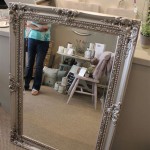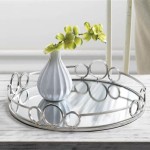How To Remove Black Mastic From a Mirror
Removing black mastic, an adhesive commonly used to secure mirrors to walls, can be a challenging but achievable task. Black mastic is known for its tenacious grip and resistance to traditional solvents, making its removal potentially time-consuming and requiring careful execution. The process often involves softening the mastic, carefully separating the mirror from the wall, and then removing any residual adhesive from both surfaces. This article provides a comprehensive guide to safely and effectively removing black mastic from a mirror and the wall behind it.
Before commencing any removal process, it is crucial to prioritize safety. Black mastic can contain hazardous materials, and the process of removing it can generate dust and fumes. Adequate ventilation is essential, and the use of personal protective equipment (PPE) is mandatory. This includes safety glasses, a respirator mask (N95 or higher), gloves (nitrile or heavy-duty work gloves), and appropriate clothing to protect skin from potential contact with the adhesive or solvents.
The condition of the mirror and the wall significantly impact the chosen removal technique. Older mirrors might be more fragile and susceptible to breakage, requiring extra caution. The wall material, whether it's drywall, plaster, or concrete, will also dictate the methods used to remove the mastic residue without causing excessive damage. Understanding these factors beforehand allows for appropriate preparation and the selection of the most suitable tools and solvents.
Assessing The Situation and Preparing Your Workspace
Prior to initiating the removal of the mirror, a thorough assessment of the situation is indispensable. This involves identifying the type of wall to which the mirror is affixed (drywall, plaster, concrete), the extent of the mastic's application, and the overall condition of the mirror itself. The type of wall dictates the permissible removal methods and the degree of force that can be applied without causing damage. For instance, drywall is significantly more susceptible to damage than concrete.
The extent of the mastic's application influences the quantity of solvent and the duration of softening time required. A generous application of mastic across the entire back of the mirror necessitates a more liberal use of solvents and potentially a longer softening period compared to a mirror with only a few dabs of adhesive. The mirror's condition is paramount; older mirrors with weakened silvering or hairline cracks are at a higher risk of shattering during the removal process, demanding extreme caution and potentially reinforcing measures like applying tape to the mirror's surface to minimize the risk of fragmentation.
Proper workspace preparation is equally critical. Covering the surrounding floor with drop cloths is essential to protect against spills, drips, and debris. Adequate ventilation is non-negotiable; open windows and use fans to ensure a constant flow of fresh air, mitigating the inhalation of fumes from solvents or dust generated during the mastic removal process. Gathering all necessary tools and materials before starting the project is a time-saving measure that minimizes interruptions and maintains focus on the task at hand. This includes items such as putty knives of varying widths, solvents, heat guns (optional), scrapers, safety glasses, gloves, a respirator, and containers for collecting mastic debris.
Safe Mirror Removal Techniques
The first step in removing a mirror secured with black mastic is to attempt to gently separate it from the wall. This should be approached with extreme caution to prevent breakage. Start by using a thin, flexible putty knife or a specialized mirror removal tool to carefully work around the edges of the mirror, attempting to sever the mastic bonds. Gently pry the mirror away from the wall, working incrementally around the perimeter.
If the mirror resists initial attempts to separate it, applying heat can help soften the mastic. A heat gun, set to a low setting, can be used to gently warm the mastic along the edges and behind the mirror. Exercise extreme caution when using a heat gun, as excessive heat can damage the mirror's silvering or the wall surface. Maintain a safe distance and avoid concentrating the heat on any one spot for too long. Alternatively, a hairdryer can be used, although it will be less effective and require more time.
Another method involves using solvent to soften the mastic. Carefully apply a solvent specifically designed for adhesive removal, such as mineral spirits, acetone, or a specialized mastic remover, along the edges of the mirror where it meets the wall. Allow the solvent to penetrate the mastic for the recommended time, as indicated on the product label. This will help to weaken the adhesive bonds, making it easier to separate the mirror. Be sure to test the solvent on an inconspicuous area of the mirror frame first to ensure it does not damage the finish.
Once the mirror is free from the wall, immediately place it on a padded surface to prevent damage. If the mirror is large or heavy, it is advisable to have a helper assist with the removal process to ensure it is handled safely and prevent accidental drops or breakage. After the mirror is removed, the next step involves addressing the residual mastic on both the mirror and the wall.
Removing Residual Mastic From The Mirror and Wall
After the mirror has been successfully removed, there will inevitably be residual black mastic remaining on both the mirror and the wall. The removal of this remaining adhesive requires a systematic approach to avoid damaging either surface.
For mastic on the mirror, gentle techniques are paramount. Begin by applying a solvent, such as mineral spirits or acetone, to soften the remaining mastic. Allow the solvent to dwell for several minutes, following the manufacturer’s instructions for optimal penetration. Once the mastic has softened, use a plastic scraper or a dull putty knife to carefully scrape away the softened adhesive. Avoid using metal scrapers on the mirror, as they can scratch the reflective surface. Work incrementally, applying more solvent as needed to keep the mastic pliable. Patience is key; rushing the process can lead to scratches or damage to the mirror's backing.
The wall presents a slightly different set of challenges. The first step is to determine the wall's composition (drywall, plaster, concrete) as this dictates the tools and techniques that can be employed. For drywall, extreme caution is necessary to avoid tearing the paper facing. Applying a solvent to soften the mastic is still a recommended first step. Allow the solvent to penetrate thoroughly. Subsequently, use a plastic scraper or a wide putty knife to gently remove the softened mastic. If the mastic is particularly stubborn, a heat gun can be used cautiously, but prolonged exposure to heat can damage the drywall paper. If drywall paper tears, it may require patching and repainting.
For plaster walls, the removal process is similar, but plaster is generally more durable than drywall. A metal putty knife can be used with more force, but caution is still advised to avoid gouging the plaster. Concrete walls are the most resilient and can withstand more aggressive removal techniques. A metal scraper or even a chisel can be used to remove stubborn mastic, but care should still be taken to avoid damaging the underlying concrete.
Regardless of the wall type, after the bulk of the mastic has been removed, a final cleaning with a solvent-soaked rag will help to remove any remaining residue. Be sure to allow the wall to dry completely before painting or applying any other finishes. Dispose of all mastic debris and solvent-soaked rags properly, as they may be flammable or contain hazardous materials. Ensure the work area is adequately ventilated during and after the cleaning process.

Remove Adhesive Black Mastic From Back Of Mirror

Remove Adhesive Black Mastic From Back Of Mirror

How To Remove Black Mastic From The Walls Hometalk
How To Remove Tar Like Adhesive On Drywall After Removing Mirror Diy Home Improvement Forum

Remove Adhesive Black Mastic From Back Of Mirror

How Do I Remove Black Mastic Stains From Brick Hometalk

How To Remove Adhesive From The Back Of A Mirror Diy

Remove Adhesive Black Mastic From Back Of Mirror

How To Remove A Mirror Glued The Wall With Mastic

Diy Asbestos Mastic Removal Safely Remove








